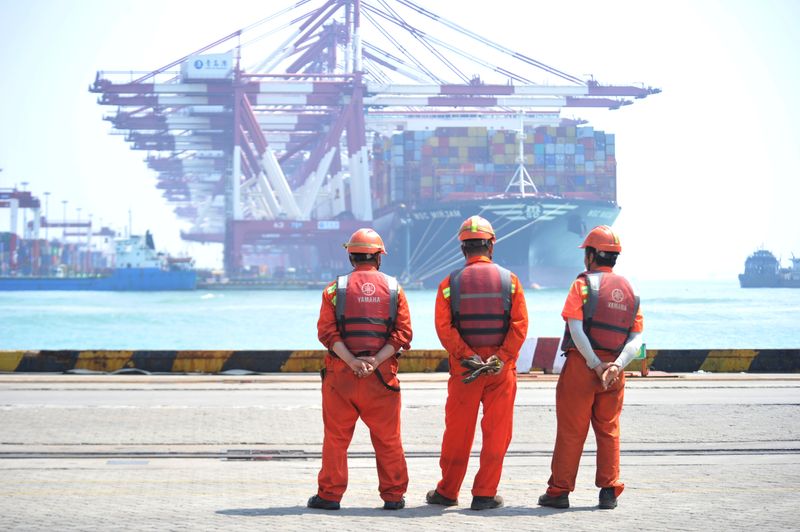BEIJING (Reuters) - China's export growth is expected to have slowed to a crawl in April as strict COVID-19 curbs hit production while imports likely extended declines, creating heavy headwinds for the world's second-largest economy in the second quarter.
The trade sector, which accounts for about a third of gross domestic product and employed 180 million people in 2020, is losing momentum as widening anti-virus curbs ensnared supply chains.
Exports likely grew 3.2% from a year earlier, according to a median forecast in a Reuters poll of 18 economists, slowing sharply from a 14.7% gain in March. The forecast is the slowest growth since June 2020.
The uncertainty over the Ukraine war and recovering production capacity overseas also squeezed China's share of global trade. The new export orders component of the official manufacturing purchasing managers' index hit a two-year low in April.
Imports were expected to have fallen 3% year-on-year in April, the poll showed, worsening from a 0.1% fall in March and marking the steepest decline since May 2020.
Sixteen economists in the poll forecast a $50.65 billion trade surplus in April, wider than the $47.38 billion in March, mostly due to the decline in imports.
The trade data will be released on Monday.
Analysts at Goldman Sachs (NYSE:GS) said in a note on Friday that COVID related restrictions disrupted domestic supply chains and port operations in the month. Trading partners such as South Korea reported weaker trade data with China.
Data from the China Port Association showed throughput of foreign goods at eight major container ports in China declined 4.1% year-on-year in the April 11-20 period.
Premier Li Keqiang this week urged support for production, logistics and employment at key trade firms.
However, investors and markets want even more support as the country's leaders urge citizens to stick with the dynamic zero-COVID policy.

Chinese capital Beijing is reporting dozens of daily infections while Shanghai said on Friday it has brought the virus under control following a month-long lockdown of nearly 25 million people. Elsewhere, some Chinese cities now require PCR test results from people in order to enter public places.
Nomura analysts estimate that it would cost 1.8% of China's GDP if 70% of the 814 million population came under a 48-hour testing mandate.